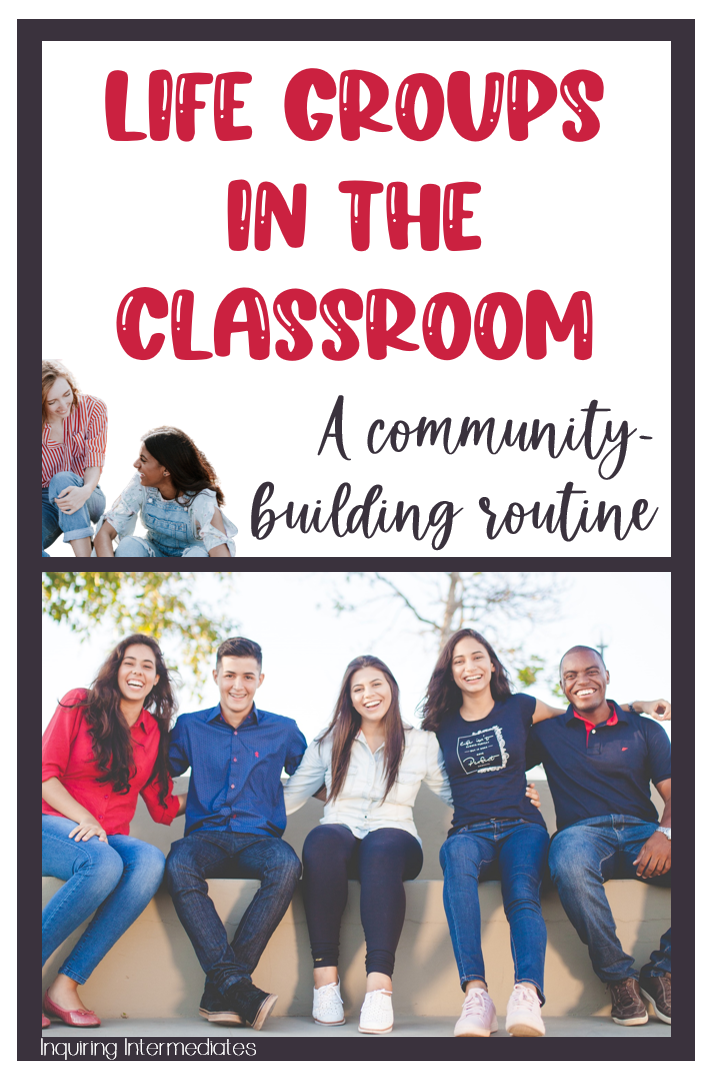About three years ago, I moved to a new city. It wasn’t far from where I’d grown up, but a few months in I started feeling really lonely. My husband and I had left the church where we had gone for years and I wasn’t feeling connected in our new one. That changed overnight when we joined a Life Group, and I am so thankful! In our church, Life Groups are groups of people who get together to ‘do life together’ so everyone can get connected. I remember leaving our Life Group after the first gathering we attended; I was smiling ear-to-ear. We had just met these people, and yet we felt welcomed from the moment we stepped in the door. They made us laugh, they shared with us, and they acted like we were worth getting to know. That is the kind of community that I want for my students.
This winter, I attended a professional development session led by Jennifer Katz, author of Ensouling Our Schools. If you ever want to read a book that gives you more classroom ideas than you can handle, this is the book for you! It’s so dense that I have to keep putting it down and taking it piece by piece. During the professional development session and in her book, Katz introduced something called Spirit Buddies. This is not her original idea, but rather one she adapted from Rabbi Shefa Gold. Spirit Buddies are groups of three students who are given fifteen minutes to connect each morning. Katz’s expectation is that each student will get a few uninterrupted minutes to talk while the others just listen, then the group can chat freely afterward. She also encourages students to check in on one another and catch each other up on things they miss when they were absent. This is her way of making sure that every student starts the day with a “hello” and a human connection.
I loved this idea right away! However, I wasn’t in love with the name “Spirit Buddies” because it reminded me of Spirit Bears. I decided to call the groups what they reminded me of from my own experience: Life Groups.
I split my class into seven Life Groups; there was one group of five but the rest were groups of four. I felt that with absences and some students arriving late, groups of three might be a bit small. I printed out a list of Life Groups and stuck it on the wall above the list of our Book Bin and Coatroom Numbers. About twice a week, sometimes first thing in the morning and sometimes right after our morning work (French Journals, Directed Drawings, or Health Workbooks), I would give students time to gather in their Life Groups. To make sure each person got uninterrupted time to share, I set five one-and-a-half minute timers. That may not seem long but try getting your quietest students to talk with an acquaintance for one-and-a-half minutes and you’ll realize it’s longer than you think! After each student had a chance to share, the groups would get some time to just chat freely.
Although some groups took awhile to warm up to one another, it didn’t take long before students started requesting Life Group time. It was such a good way to get everyone connected with people they wouldn’t normally choose to chat with. I loved wandering the room and hearing what they shared with one another. Sometimes if got surprisingly deep!
Because I didn’t implement these groups until late winter and we went online after Spring Break, my students were only in one Life Group this year. Next year, I hope to start sooner and change the groups up a few times throughout the year. I also hope to schedule Life Group time a little more frequently, perhaps three times a week.

